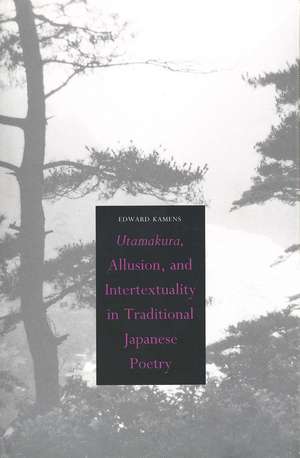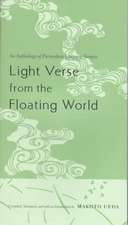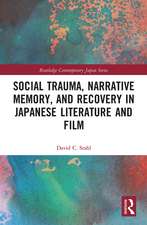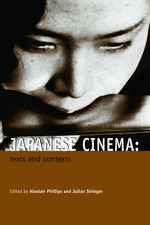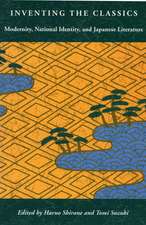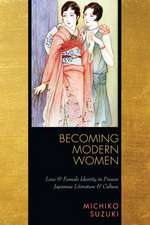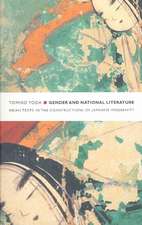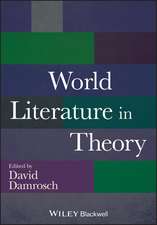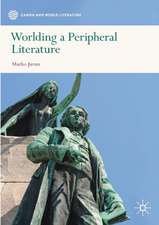Utamakura, Allusion, and Intertextuality in Traditional Japanese Poetry
Autor Edward Kamensen Limba Engleză Hardback – 25 iun 1997
A central feature of traditional Japanese poetry (waka) is the use of utamakura—a category of poetic words, many of which are place-names or the names of features associated with them—to cultivate allusion and intertextuality between individual poems and within the tradition. In this book Edward Kamens analyzes a wide selection of poems to show how utamakura came to wield special powers within Japanese poetry. He reveals how poets in generation after generation returned, either in person or in imagination, to these places and to poems about them to encounter again the forms, styles, and techniques of their forebears, and to discover ways to create new poems of their own.
Kamens focuses especially on one figure, "the buried tree," which refers to fossilized wood associated in particular with an utamakura site, the Natori River, and is mentioned in poems that first appear in anthologies in the early tenth century. The figure surfaces again at many points in the history of traditional Japanese poetry, as do the buried trees themselves in the shallow waters that otherwise conceal them. After explaining and discussing the literary history of the concept of utamakura, Kamens traces the allusive and intertextual development of the figure of the buried tree and the use of the place-name Natorigawa in waka poetry through the late nineteenth century. He investigates the relation between utamakura and the collecting of fetishes and curios associated with utamakura sites by waka connoisseurs. And he analyzes in detail the use of utamakura and their pictorial representations in a political and religious program in an architectural setting—the Saishoshitennoin program of 1207.
Kamens focuses especially on one figure, "the buried tree," which refers to fossilized wood associated in particular with an utamakura site, the Natori River, and is mentioned in poems that first appear in anthologies in the early tenth century. The figure surfaces again at many points in the history of traditional Japanese poetry, as do the buried trees themselves in the shallow waters that otherwise conceal them. After explaining and discussing the literary history of the concept of utamakura, Kamens traces the allusive and intertextual development of the figure of the buried tree and the use of the place-name Natorigawa in waka poetry through the late nineteenth century. He investigates the relation between utamakura and the collecting of fetishes and curios associated with utamakura sites by waka connoisseurs. And he analyzes in detail the use of utamakura and their pictorial representations in a political and religious program in an architectural setting—the Saishoshitennoin program of 1207.
Preț: 469.89 lei
Preț vechi: 610.24 lei
-23% Nou
Puncte Express: 705
Preț estimativ în valută:
89.91€ • 94.21$ • 74.33£
89.91€ • 94.21$ • 74.33£
Carte tipărită la comandă
Livrare economică 11-25 aprilie
Preluare comenzi: 021 569.72.76
Specificații
ISBN-13: 9780300068085
ISBN-10: 0300068085
Pagini: 336
Dimensiuni: 156 x 235 x 29 mm
Greutate: 0.69 kg
Ediția:New.
Editura: Yale University Press
Colecția Yale University Press
ISBN-10: 0300068085
Pagini: 336
Dimensiuni: 156 x 235 x 29 mm
Greutate: 0.69 kg
Ediția:New.
Editura: Yale University Press
Colecția Yale University Press
Notă biografică
Edward Kamens is Sumitomo Professor of Japanese Studies at Yale University.
